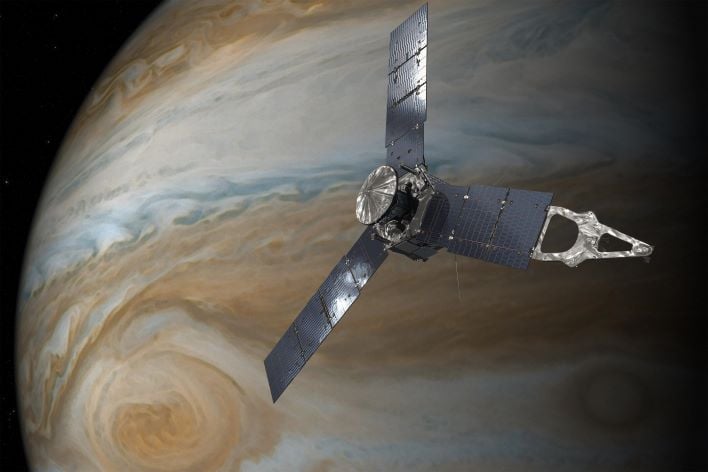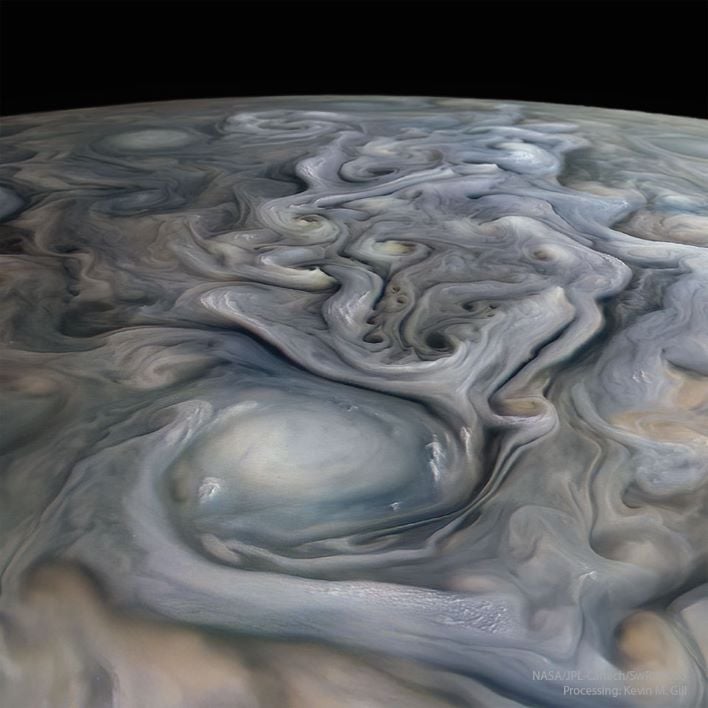NASA Shares A Stunning Photo Of Swirls On Jupiter Cause By Anti-Cyclone Storms


On a recent low-level flyby over the largest planet in our solar system, NASA's Juno space probe caught this amazing photo of a massive anti-cyclonic storm amidst other massive swirly storms. Looking like hot sulfur mud pots at Yellowstone or Lassen, these storm systems could easily swallow an Earth or two in their wake. After all, Jupiter is so large that it can fit over 1,300 Earths in it.
As NASA describes the APOD, "Big storms are different on Jupiter. On Earth, huge hurricanes and colossal cyclones are centered on regions of low pressure, but on Jupiter, it is the high-pressure, anti-cyclone storms that are the largest. On Earth, large storms can last weeks, but on Jupiter they can last years. On Earth, large storms can be as large as a country, but on Jupiter, large storms can be as large as planet Earth. Both types of storms are known to exhibit lightning.
The featured image of Jupiter's clouds was composed from images and data captured by the robotic Juno spacecraft as it swooped close to the massive planet in August 2020. A swirling white oval is visible nearby, while numerous smaller cloud swirls extend into the distance. On Jupiter, light-colored clouds are usually higher up than dark clouds. Despite their differences, studying storm clouds on distant Jupiter provides insights into storms and other weather patterns on familiar Earth."
Since launching in 2011, Juno continues to break new ground on its Jupiter-based mission, discovering new information and data that has changed our view of Jupiter’s atmosphere and interior, revealing an atmospheric weather layer that extends far beyond its water clouds, plus a deep interior with a dilute heavy element core. Juno is expected to end its commission in 2025 and is slated to be burnt up in Jupiter's atmosphere.

